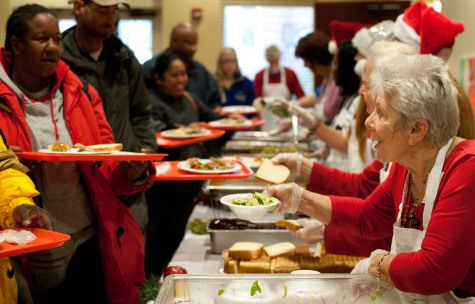Neighborhood gentrification: our community is under attack
Just a decade ago, the H Street corridor in Washington’s Northeast quadrant boasted no more than a few dingy strip malls and an unimpressive collection of take-out restaurants. In the past five years, however, the neighborhood has transformed into a hipster hangout lined with upscale restaurants and fine establishments.
Consequently, this new development has not been very kind to the residents of nearby affordable housing areas, such as the Sursum Corda Cooperative and the Trinidad neighborhood, as rising property values continue to push residents outward. This phenomenon is known as gentrification. In short, it is when the small corner liquor store in a deteriorated and often crime-ridden neighborhood is torn down to make way for a shiny new chain restaurant.
The draw for gentrifying neighborhoods may seem obvious. Crimes rates should drop, and the area should become more aesthetically pleasing while creating a broader tax base to allow for further urban development. However, according to a 1986 study by McDonald, every gentrified neighborhood studied had a total index crime rate above that of their respective cities. The movement of wealth from the city to the suburbs once allowed the middle class to ignore urban poverty. With gentrification, the shift of wealth has moved out of the suburbs and back into the city, where it has displaced those who live there.
In urban culture, it is considered “hip” to open up a trendy new restaurant in a dilapidated neighborhood to escape the “mainstream.” The idea of going to an out-of-the-way location to try out a stylish José Andres restaurant that just opened up gives a sense of adventure to city dwellers who can afford it. This novelty, however, has a serious effect on the residents of the area in question. A place to buy affordable groceries may be important for local low-income families, but the über rich from nearby Potomac, MD need a swank new café to sip macchiatos in while sampling homemade gelato.
In a matter of years, a grimy neighborhood can be transformed into a hotbed of social conflict and property crime with the addition of a few up-and-coming establishments. This phenomenon, however, is just a natural phase of city growth. Although its effects can displace thousands of people, more affluent citizens will continue to pour their funds into a variety of neighborhood renewal projects. Although gentrification, seen by the city as a great way to revitalize poorer neighborhoods, cannot be stopped, it is important for one to think of the previous residents of the building that is now a trendy gourmet ramen noodle shop. Mixed income housing has been put forth as a solution to the problem. but has yet to yield concrete results. Despite having been displaced, the former inhabitants of these neighborhoods can rest assured that their old homes now serve Counter Culture pourover coffee.





